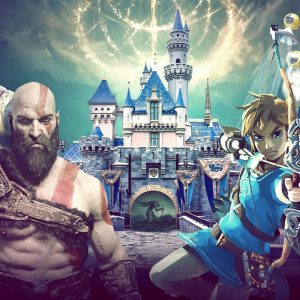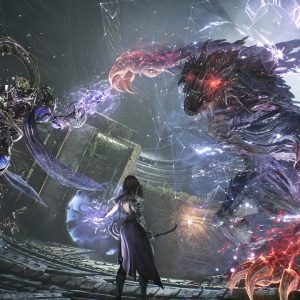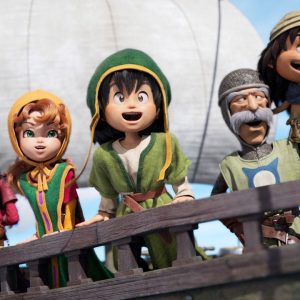Sharing the world of shooters.
When The Division 2 was first announced to be coming out a month after Anthem at E3 2018, I remember thinking the familiar-looking sequel to 2016’s original would have a hard time stealing the spotlight from the flashy and (potentially) innovative sci-fi shared-world shooter. Now Anthem is out, and after 40+ generally underwhelming hours with it, I feel the opposite is true. Anthem’s combat is fun, and I have high hopes for the future, but the fact remains that too much of its meaningful multiplayer gameplay and progression was hidden behind its repetitive and weirdly lonely quest grind. With this all-too-common shared-world shortcoming fresh in players’ minds, Massive Entertainment is in a unique position to showcase what lessons it’s learned from nearly three years of post-launch support on The Division.
“The amazing thing about working on the live game for [2016’s] The Division is that we have two years of learnings, of how people enjoy playing the game, what people enjoy the most about it,” said Julian Gerighty, Creative Director at Massive Entertainment. “And we know that endgame is where the core, the meat of the experience lies. So we went into the Division 2 not with a multiplayer-first attitude, because that’s a given. We went in with an endgame-first attitude.”
Nothing is certain until The Division 2 launches on the March 15th, but statements like the one above make me hopeful that I’ll be picking up what the sequel is putting down. To that end, there are a few ways that The Division 2 can deliver in places where Anthem left me wanting.
Interesting Loot the Whole Way Through
Anthem’s hand-crafted effects on masterwork and legendary gear are exactly what I want from my shared-world shooter loot, but this unique gear doesn’t show up until almost max level. The common, uncommon, rare, and even epic loot drops that you get before reaching the endgame are effectively interchangeable in terms of function: a sniper rifle with four random, ultimately irrelevant modifiers is no better than a sniper rifle with only one. As a result, Anthem’s power progression stagnantes for a large portion of the initial leveling experience. Though BioWare has recently announced that they will be revising this system in an upcoming patch.
The Division 2 needs to drop low-level variants of build-altering high-end gear well before hitting the level cap. I want to be excited about loot during the grind to max level, and an underpowered sneak peek at the kind of items I’ll be working with once I reach the endgame will do just that.
Integrating “Dungeons” into the Leveling Process
One of the greatest missteps of Anthem’s critical path storyline is its lack of gameplay variety. You’re only forced into Freeplay twice, and you can immediately quit the expedition one of those times to advance the story. Similarly, you’re never actually required to step foot in a Stronghold. Sure, you can run the Tyrant Mine stronghold early on, but the experience you’ll receive for your efforts is about half that of a regular agent quest or contract, so what’s the point?
The Division 2 should incorporate bite-sized samples of its varied endgame activities into the initial leveling grind, and so far, the signs look good. In the private beta, you received a mission to enter the Dark Zone only a couple of hours in, and missions like the Jefferson Trade Center mirror the challenging, hand-crafted group content that will likely populate the endgame.
Meaningful Class Fantasy & Role Fulfillment
There are plenty of reasons to communicate with your teammates later on, but during the critical path, it’s difficult to get a word in edgewise amongst the unceasing, expository NPC chatter. Shared-world shooters should give you more reasons to play with others than alone, even before hitting the endgame. Unfortunately, Anthem’s repetitive mission structure doesn’t offer much incentive to build a proper squad, and simply matchmaking four players together to tackle content that’s designed to be beatable by a single person doesn’t inspire much camaraderie either.
It remains to be seen if The Division 2 can deliver on teamwork-inducing mechanics before, or even after, arriving at level cap. Archetype-defining signature weapons and specializations aren’t unlocked until max level, which isn’t ideal for encouraging meaningful teamplay early on. Thankfully more is always merrier in the Dark Zone, but I’d like some incentive to group up with friends in early PVE, too.
Vast and Varied End Game Content Offerings
If the past two decades of MMOs and shared-world-shooters have proven anything, it’s that a fulfilling endgame is the most difficult box to check. The mechanically-intriguing boss fights in Anthem’s Strongholds give me hope for its future, but there’s currently nowhere near enough varied or rewarding content to keep me engaged long-term.
“
We went in with an endgame-first attitude.
This is where The Division 2 can really shine. Expected endgame activities available at launch are exclusive missions, a choice between three class specializations, a new enemy faction called the Black Tusks, and the occupied Dark Zone where anything goes. Shortly after launch, Massive will be laying it on thick with 8-player raids that feature “mechanically bespoke” (a fancy way of saying each one will feature a unique gameplay twist) encounters offering unique loot. The aforementioned activities are what unlocks at endgame, but the assumption here is that you’ll still be able to run scaled-up versions of older missions and open world activities as well. If all of these opportunities are further accented by an interesting loot chase, The Division 2 may just be the first shared-world shooter to launch with a halfway decent endgame.
Where the Division 2 May Struggle
All of that being said, it could still be an uphill battle for Tom Clancy’s finest. In spite of a few imprecise telegraphs and bugs, Anthem’s combat is excellent. Its deft ariel maneuvering transitions seamlessly into punchy third-person shooting, accented by a suite of (mostly) fun-to-use abilities that can combine into impactful combos. And, crucially, the combat leaves a lot of room for unique mechanical variance both in terms of enemy encounters and interesting loot modifiers. Dodging fireballs and waves of lava in order to find an opening to call down a bolt of lightning, or annihilating an enemy with a nuke launcher from on-high is a lot more interesting than the unremarkable cover-based, bullet-hose shooting that constitutes the majority of what we’ve seen of The Division 2’s combat.
Anthem stands head and shoulders over the first Division mechanically, and at least some of that has to do with the room it leaves itself thematically to make gameplay-oriented decisions. The Division is grounded in reality, normal dudes in hoodies tend to replace the spectacular boss fights that work so well in shared world shooters. And from what I’ve played of The Division 2, that’s still very much the case. The sense of realism is lost the first time you encounter a yellow-bar enemy, and nerfing boss hit points will only do so much.
“
Reality is no excuse to be boring.
If The Division 2 wants to break away from its historically mediocre PVE mechanics, I think it should lean into the more absurd aspects of its world. The Colonel Bliss helicopter fight from the first game is the absolute baseline of what I want to see from Massive’s encounter design – and this goes for loot as well. If the firearm can’t rattle off a lightning bolt every third shot (because that’s somehow more unrealistic than surviving being shot in the head 50 times), then Massive Entertainment needs to think outside of the box when it comes to its unique loot modifiers. What about a flare gun in the pistol slot that, when used to kill an enemy, calls in an NPC reinforcement? Reality is no excuse to be boring.
The Division 2’s proximity to Anthem is bound to not only spark comparison but larger discussions about the shared-world shooter genre as a whole. At their best, shared-world shooters offer truly unique multiplayer experiences like raids and progression-based PVP, but if those rewards are few, and hidden behind an uninspired grind, I’m fearful that the whole genre will be marginalized and dismissed.
To find out whether or not The Division 2 fulfills its promise of a worthwhile endgame look out for my review coming soon on IGN.com.
James Duggan is a dank memelord. Follow him @ThuggnDuggn on twitter.























